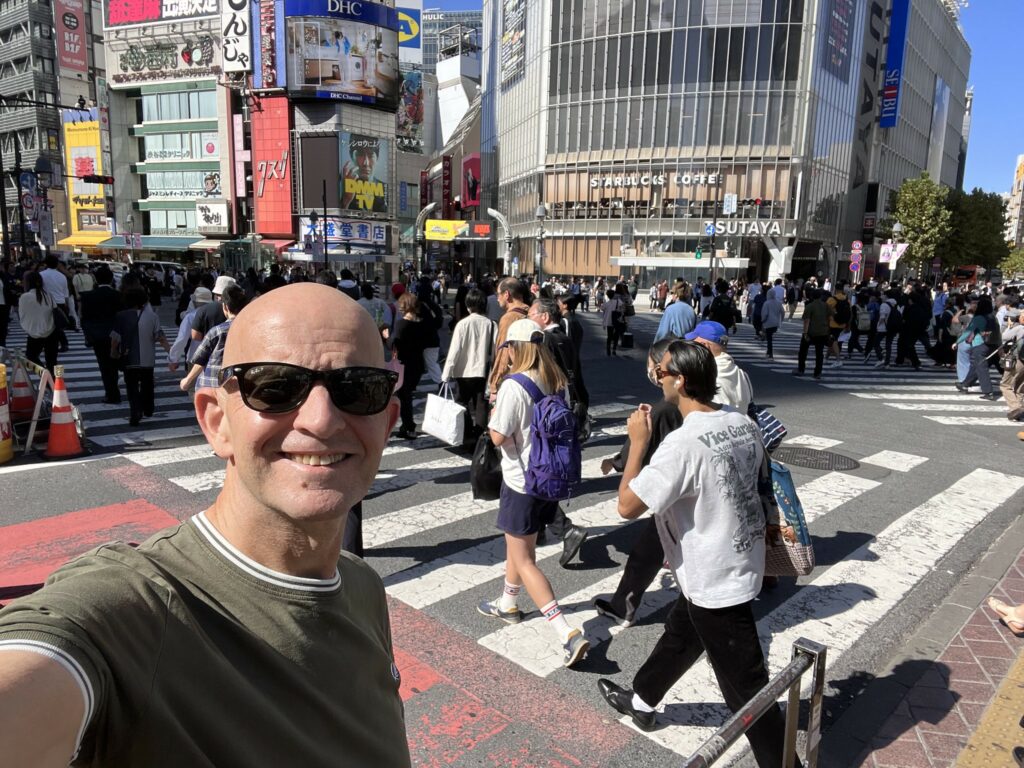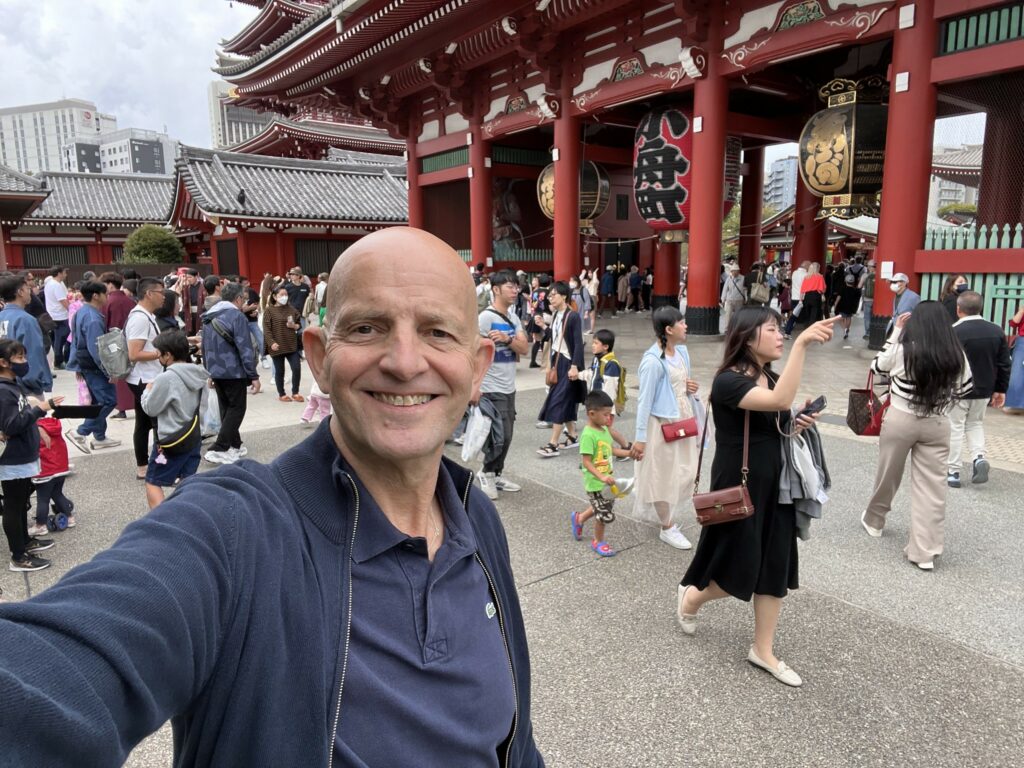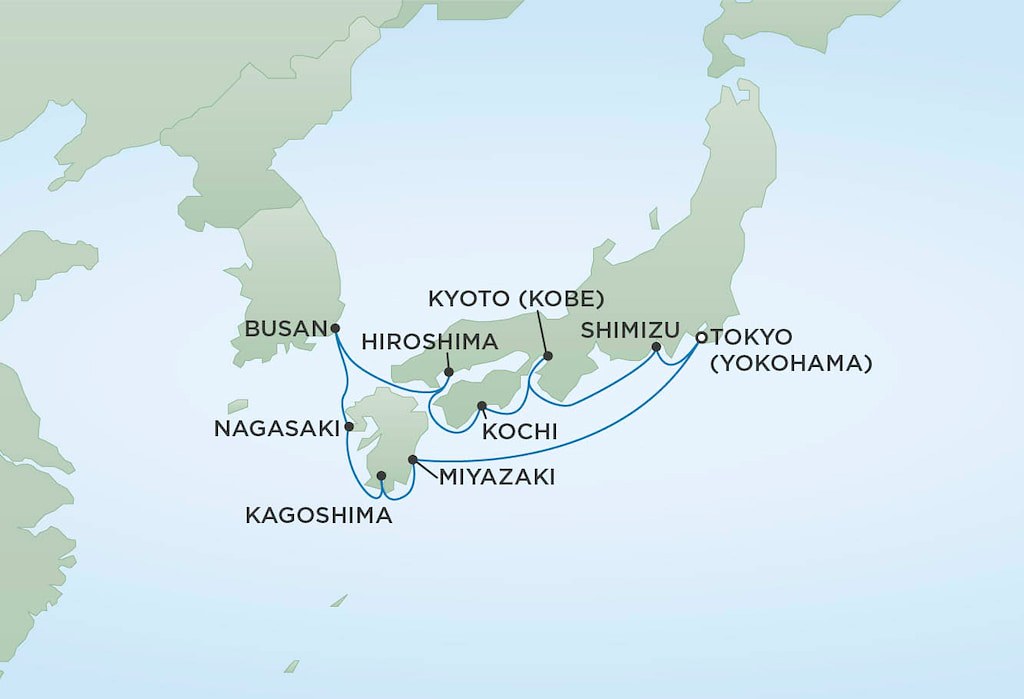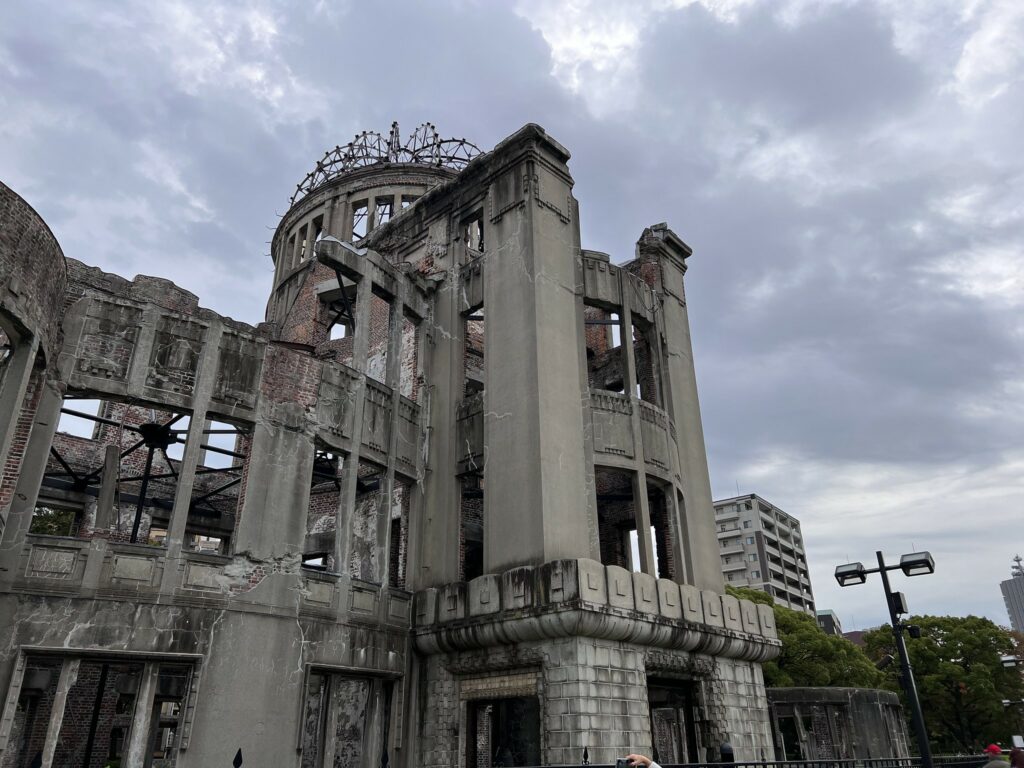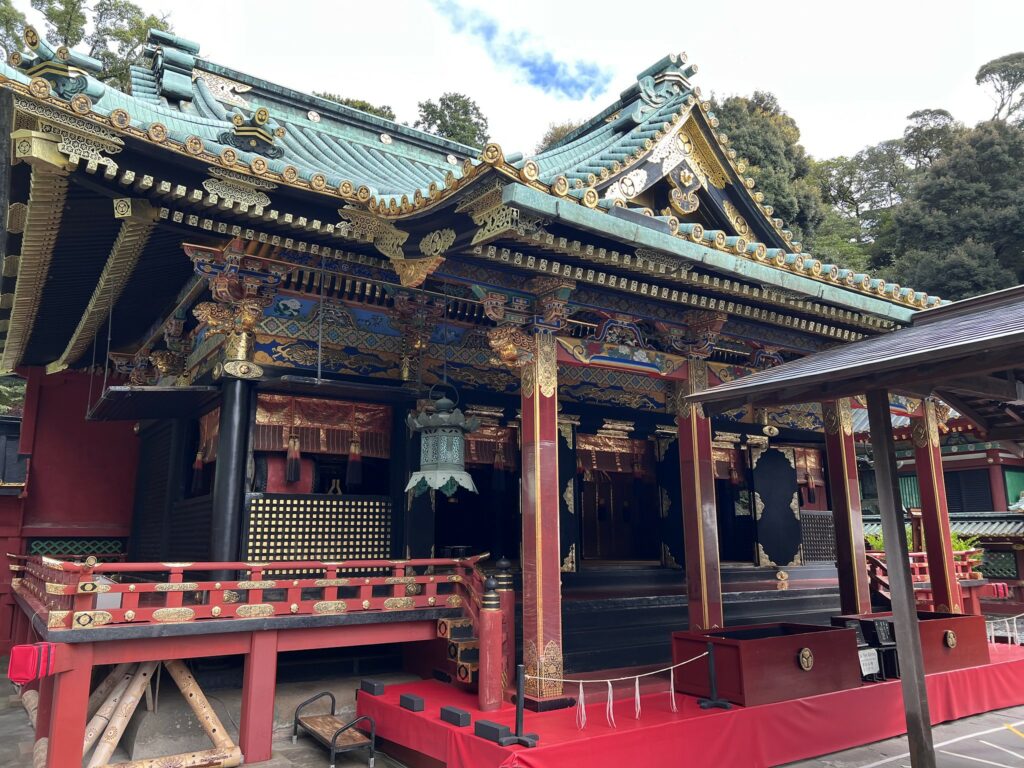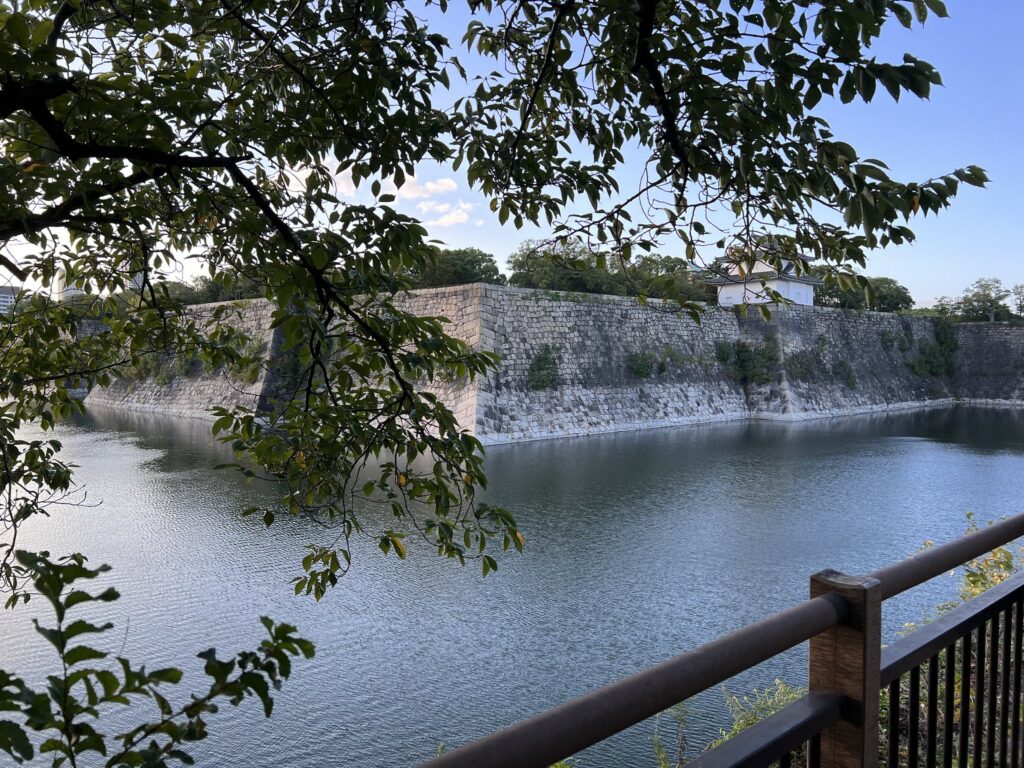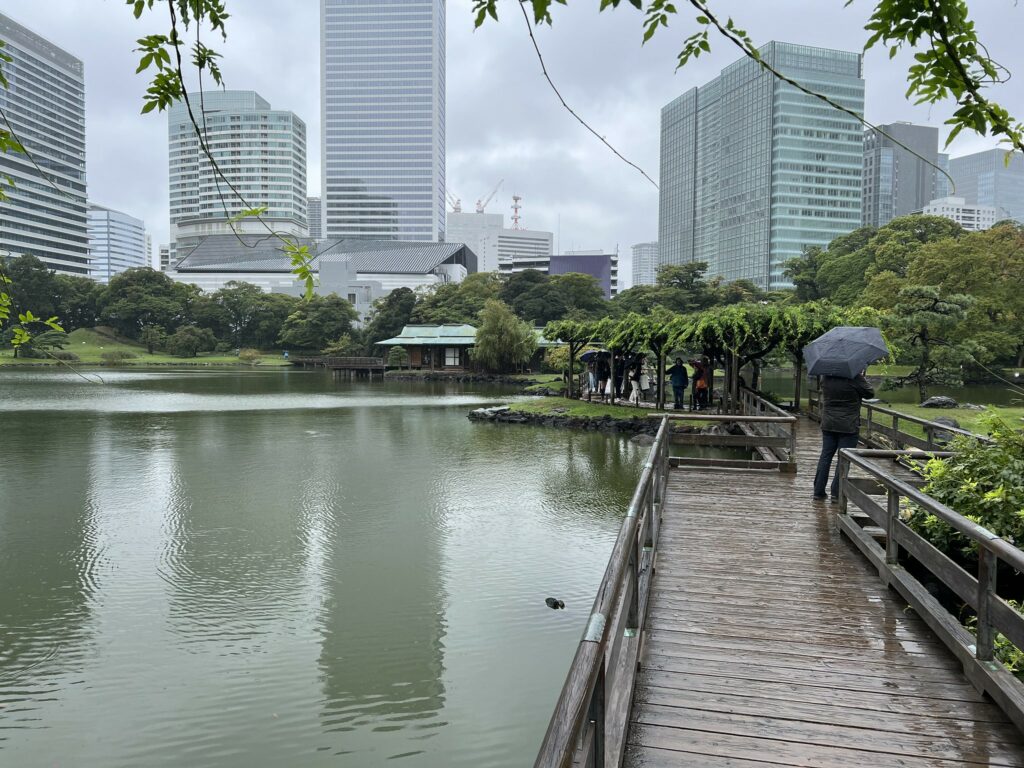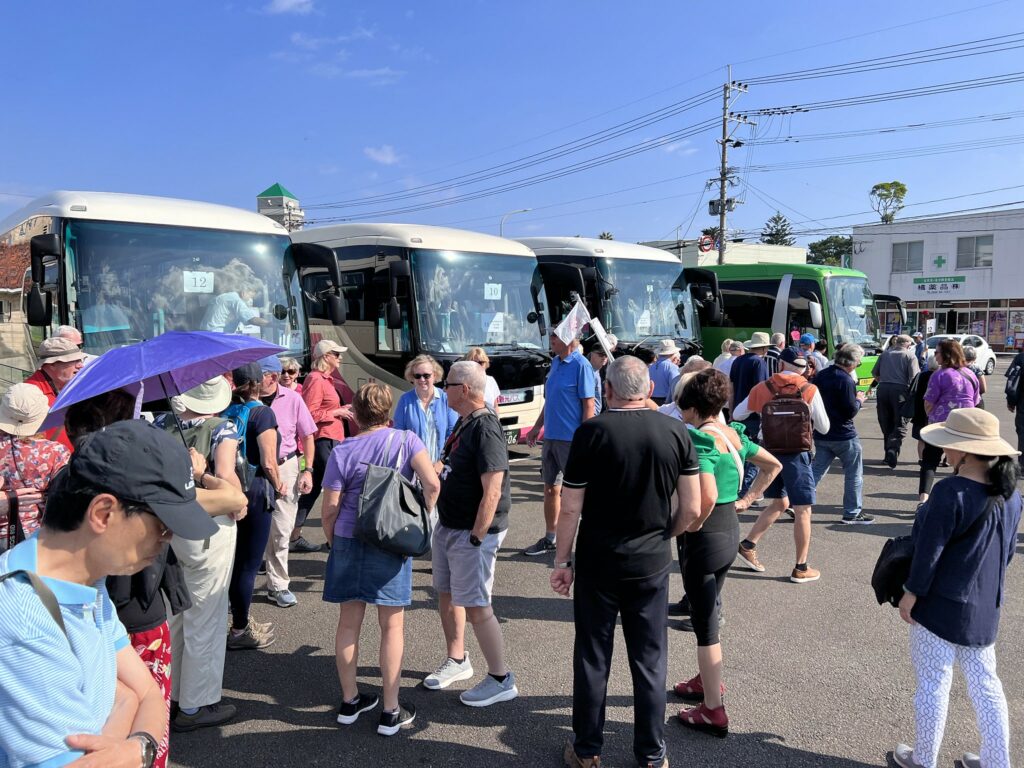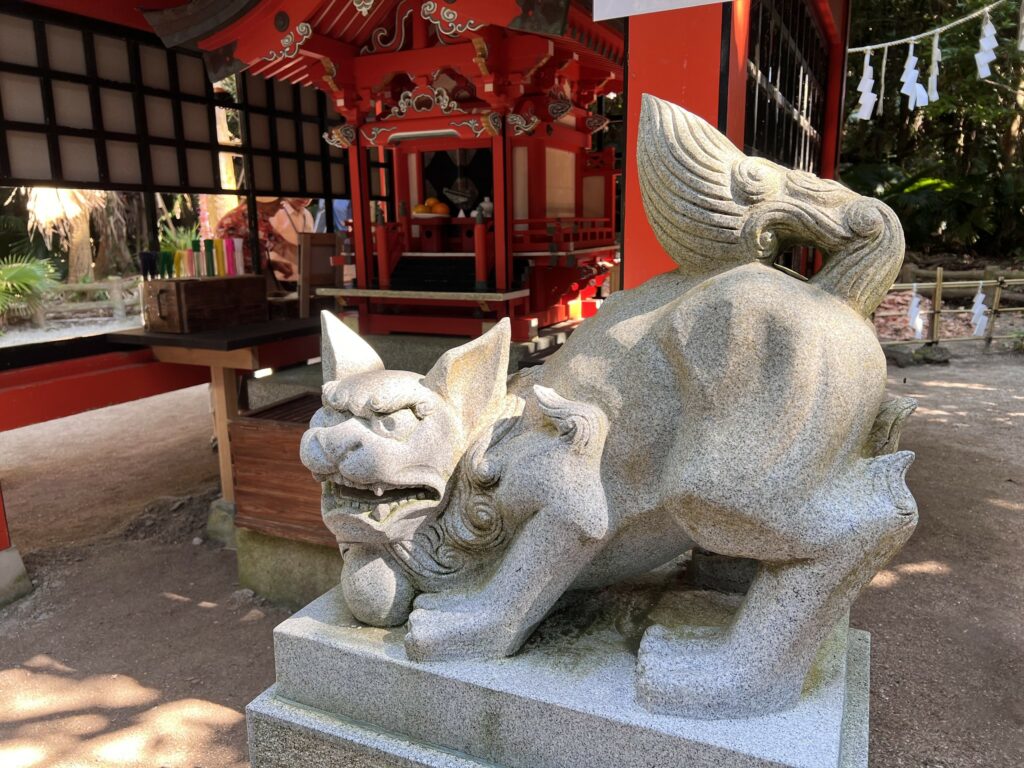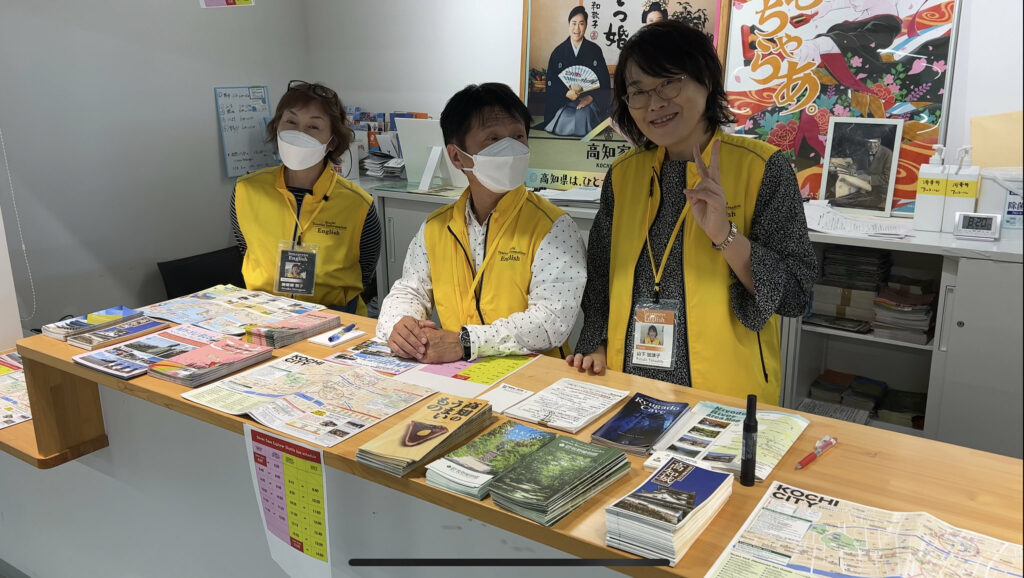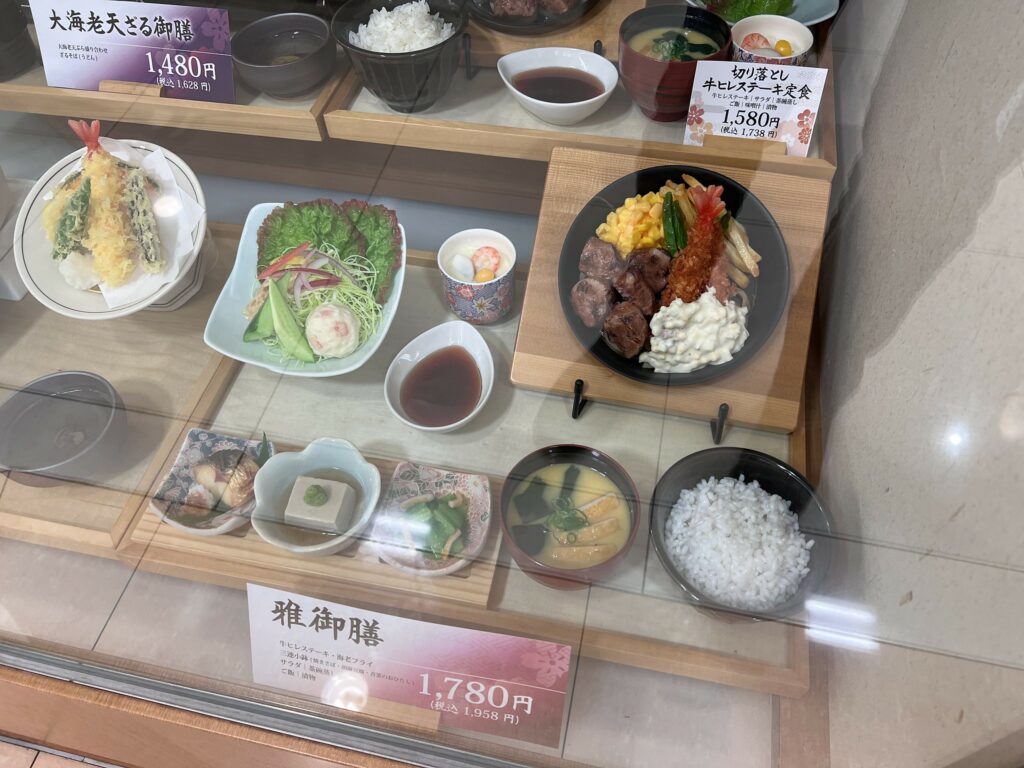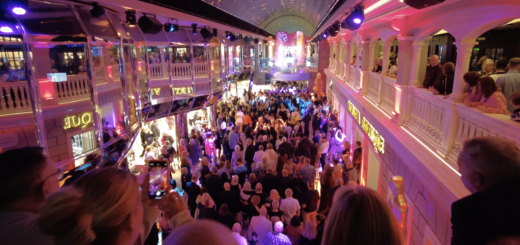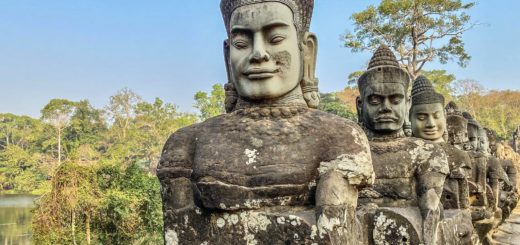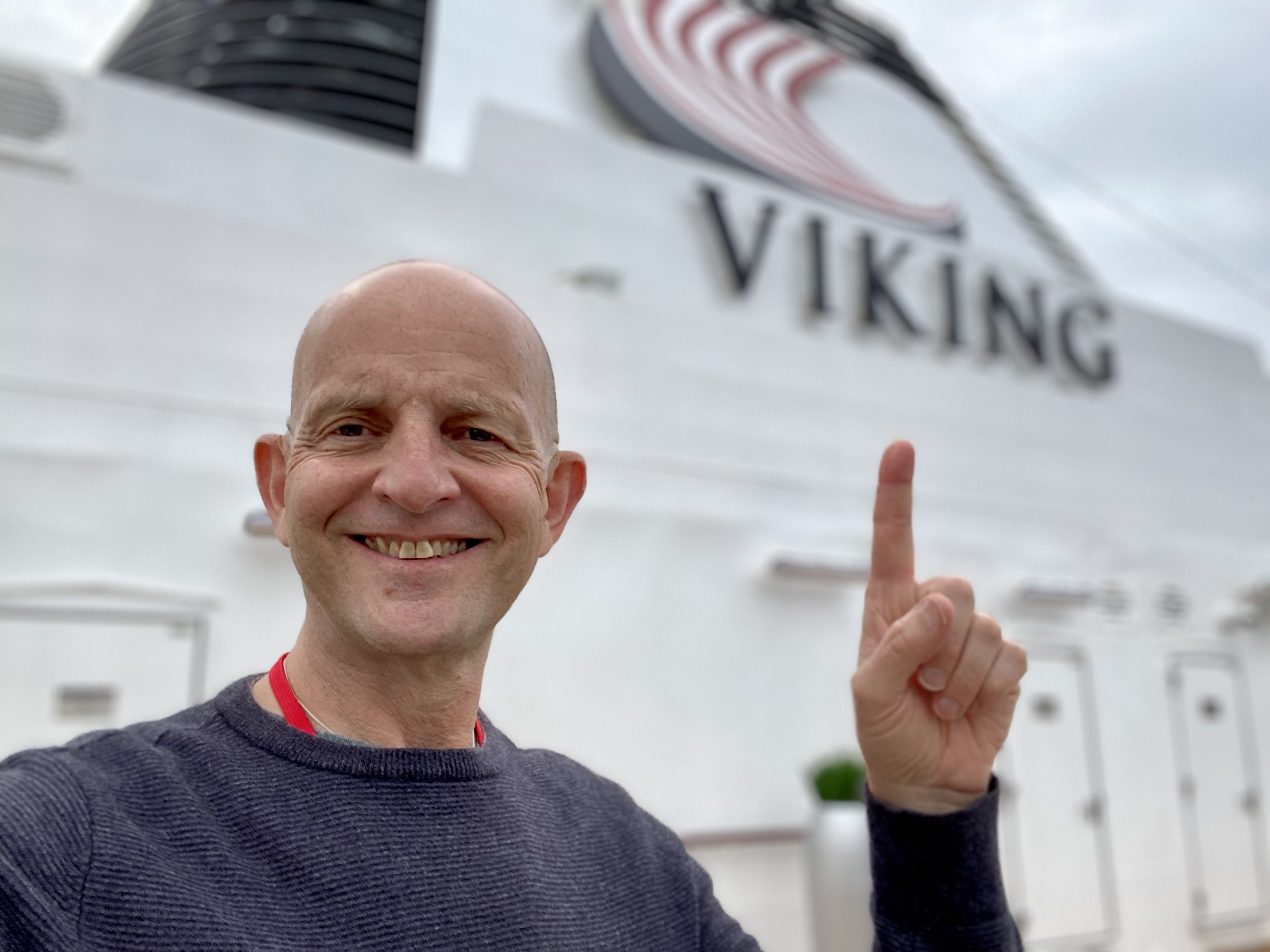I Discovered The Best (& Worst) Things About Cruising Japan
Navigating Japan! I Discovered The Best (& Worst) Things About Cruising Japan
We are only ever likely to go to Japan once in our lives and so it’s important to get it right. While I didn’t get everything 100% spot on, I now know what future cruisers need to know to avoid my mistakes, work around downsides, and ensure they have the best time.
I found the first challenge is making sure to see the right sights and truly experience the unique culture. I saw many of my fellow travellers come away not really seeing the best of either.
Cruising Japan Challenge #1: Seeing The Best of The Best
You must ensure your cruise is long enough and jam packed with Japanese ports. I recommend at least a 10-day cruise like I did on Regent Explorer. we had several Japanese ports plus the embarkation port of Tokyo.
This is important because you will lose one day of your cruise exploring Japan because cruises must call on a foreign port, which is often Busan in South Korea.
The next essential thing before going is to plan what you’re going to see in the ports to avoid making the mistake that many people did on my cruise. They were moaning about how repetitive the excursions were becoming because they were basically going to see shrine after shrine.
There are five experiences I discovered cruisers should aim to be seeing when in port. Make sure you plan a good mix of all of them.
Atomic Bomb Sites
You should explore World War II and the atomic bombs dropped on Japan by the USA affecting two ports on most cruises: Hiroshima and Nagasaki.
Both have Peace Memorial Parks, Hiroshima dominated by the Atomic Peace Dome and Nagasaki by the statue of a man pointing to the sky, and museums. The Hiroshima Museum I found more challenging with its focus on the injuries and deaths. Nagasaki Museum is more factual and less emotive.
Temples and Shrines
While you should visit shrines and temples, as every port has them, make sure you focus on the iconic or impressive ones.
For example, those in Kyoto are a must, even though it’s a 1.5-hour trip from Kobe or Osaka where your ship will dock. The famous Golden Pavilion, covered in gold leaf, is here as is the Sanjusangendo Buddhist Temple with 1,001 statues of Kannon, The Goddess of Mercy.
If in Shimuzu, go to the Kunozan Toshogu Shrine. This requires a cable car ride on the Nihondaira Ropeway. Before the cable car you’d have had to climb 1,000 stone steps to get there.
Another must-see is the Senso-ji Temple in Tokyo, which has the iconic red lantern that you’ll recognise from the publicity shots of the city. Also in the city is the Meiji Shrine dedicated to the Emperor seen as the father of modern Japan, located in a forest of 120,000 trees.
I went on many other excursions with shrines but now know to check if the ones on the tour or in port are significant and important.
Castles
I also recommend you include in castles in your mix. Again, like with shrines, some are better than others.
In Osaka, I loved the Osaka Castle in vast grounds with massive walls and moat, and the impressive castle can be climbed.
In Kochi the Castle is truly remarkable and one of the remaining truly original ones. It was built in the Edo period in the 17th century and there is an amazing view if you climb up to the top.
If you go to Kyoto, visit Nijo Castle, also in sprawling grounds. It was built in the 1600s and you can tour the castle, which has plank floors that chirp when walked on to warn if there were intruders.
If a place is billed as having a castle, I learnt to check that the castle is still there! So, for example, at Obi Castle there was no castle as it had been destroyed – there’s just a museum.
Gardens
The fourth essential thing to include in your mix are Japanese gardens, and there’s some beautiful ones I discovered.
In Tokyo they have the Hamarikyu Gardens in the centre of town surrounded by skyscrapers. It was originally built for a feudal lord’s Tokyo home and still has some original tea houses.
In Hiroshima I loved the Shukkeien Japanese Gardens, created 400 years ago and meticulously rebuilt after the atomic bomb.
Nagasaki offered the Glover Garden just above the cruise port. It’s fascinating as it showcases western-style houses key to Japanese history, including Thomas B. Glover a Scottish man, who contributed enormously to Japanese modernisation.
Iconic Landscapes
I also recommend visits to iconic landscapes, especially as I will discuss later there’s an issue with the ports and towns you will visit.
For example, if you’re in Shimizu, go to the Miho No Matsubara Pine Forest and beach as it is the spot the picture postcard shot of Mount Fuji is taken. The day I went there, it was covered in cloud, but did see it from the port later.
I loved visiting the Ryugado Caves at Kochi, stalagmite caves with 800 steps in and out of it. But fascinating.
Also, at Aoshima island as well as a Shrine is the unusual Devil’s Washboard where waves created famous grid formation in the sandstone. So, check your ports to see if there are incredible landscapes or must-see natural sights.
I also discovered five key watch-outs you must factor in when planning and sightseeing.
Sightseeing Watch-outs
First, all these places are on everybody’s wish list, both land and cruise visitors, and I found them very crowded especially as cruise excursions tend to visit them at the busiest times.
Also, the peak times and when most cruises operate are Spring (March to May) to try and catch the April Cherry Blossom and Autumn (September to November), so you will be there when busiest.
Second, I discovered that much of what we see is not authentic, as a many were destroyed or badly damaged either during the Second World War or as many of the original buildings were wood had been destroyed by fires.
So, even places like the ancient looking Tokyo Senso-ji Temple I mentioned was recreated post-war. So, much of what we see is not all original, especially those close to the port as many of those cities were naval or military bases or had heavy industry factories, and so were heavily bombed.
Limited Mobility & Guides
Third, if you have limited mobility check excursion descriptions carefully as there’s often a lot of walking, steep steps, and strict rules around where tour buses can park, which is often a distance from the sites. I did see people on my tours struggling at times as they had not checked these details.
Four, the guides on your tours will often be okay, not brilliant. I discovered through my cruise line Destination Services that being a tour guide is not seen as a prestige job. So many Japanese guides do it as a second job or on retirement, and so versus some regions which require a lot of training, the guides tend to be just okay.
Five, because most cruises start and end in Tokyo, please plan a pre- or post-stay to see everything there is in Tokyo as you can’t do it all in just one day. I, for example, had a three-night pre-stay included in my cruise and even that was hectic.
Cruising Japan Challenge #2: Experiencing Japanese Culture
An unexpected challenge I encountered on my trip was it took effort to experience and get immersed into the culture. Be ready for that.
I found going on a cruise to Japan was easy to get stuck in a bubble. The tours and sites cater very much to tourists and were not within or close to local communities, stores, and restaurants.
This was magnified as many of the cruise ports are industrial working ports and not within the city centre with the key exception of Nagasaki. I usually couldn’t stroll into local areas beyond perhaps a mall by some ports.
Also, on the cruise we were served the usual cuisine so making the effort to go and try the local restaurants is key.
Something I encourage you to check when planning as it was a huge miss on my cruise, was the lack of Japanese history and cultural enrichment and port talks. We had someone talking about volcanos, earthquakes, and geological things, which was not immersing me into Japan.
I found I was craving more of the history and context to better appreciate what I was seeing. The Edo period, the Samurai, why and how Japan spent 250 years in isolation from the West, why the capital changed several times, most recently from Kyoto to Tokyo. What happened during World War II and so on to make the experience, places and sights all make more sense.
At least before going, buy a good guidebook and read up. I wish I had. Especially with the tour guide situation. But there is also another thing I would do different know I know about it.
Cruising Japan Challenge #3: Going It Alone
Self-touring is way easier than I had imagined.
Most ports had incredible visitor information booths, with many people manning them, loads of amazing books, maps, and guides on what to see and how to get there. Most ports had shuttle buses laid on to get to the close-by places. And there were taxis to go further afield too.
Often at the shuttle bus stops on the other side were even more people to assist.
Also, I found the Japanese are very helpful to tourists, and won’t just point us in the direction, they’ll often take us there. When I was off self-exploring in Kumamoto, for example, I saw an elderly lady stop what she was doing and insisted on showing a couple the places to go in the castle and shrine area rather just explain it.
There are police boxes around in Tokyo and other towns where they to speak English and can help too.
English & Japanese
I found in all the tourist areas, signs are in both English and Japanese and especially in tourist areas there’s a lot of English speakers.
But most of all, the ports and port towns were very welcoming of tourists, and went out of their way to make it easy to self-tour.
As an aside, they are so welcoming that most ports would have bands, school choirs or school marching troupes perform to say goodbye to the ship.
I loved self-touring as this was also a chance to experience Japan in more immersive way.
The local restaurants have pictures of the food on the menus and those plastic replicas in the window, so I found it easy to point and mime to order a meal.
There are drink vending machines all over, which are easy to use. I also loved getting to visit crazy shops the Japanese seem to love like those stocking toys in capsules, and playing in the bright, gaudy, and massive game arcades.
Less Expensive
By the way, I found it less expensive than I expected in port, partly because of the favourable exchange rate, and it was London kind of prices once converted. So, self-touring did not feel that costly, and I found using Cards was easy versus cash. I only converted $200 into Yen at the start if the trip and did not use even all that as used cards mostly. I will say though that Tokyo hotels were crazy costly to stay.
Trying things that are out of the cruise tour bubble is a real must. And as I said way easier to do than I expected. However, there some important considerations you need to factor in as I discovered.
I found that culturally there are some key differences that we as visitors need to respect.
Cruising Japan Challenge #4: Being Culturally Sensitive
I found Japan to be very rule-based and respectful of others. There were signs all over with rule after rule, and the Japanese expect us to follow them. I did feel there were many in and around ports, which I suspect are targeted at us and our western behaviours!
For example, it’s considered inappropriate to speak loudly, be on phone calls on the Metro and public transport, and to listen to music where noise leaks from earphones. Doing FaceTime calls and watching videos without earphones is a no-no. Even in the Japan Airlines lounge phone calls were not permitted other than in specific booths. There’s a real expectation to be polite and respectful.
Never drop litter. People are likely to tap you on the shoulder if they see litter, as happened to me, as they assumed as the only Westerner around, I must have discarded it on the floor.
I also found that tipping is not a thing in Japan. I found leaving money in a restaurant, they handed it back to me assuming I had left it by mistake. Although tour guides, of course seemed more used to being tipped.
I think it disappointing that Japan is becoming more Westernised. I saw so many Western chains like Starbucks, McDonald’s, Burger King and loads of 7-Elevens. But certainly, from a culture perspective, I found the Japanese very respectful, polite, tidy, and very considerate of other people. So do bear that in mind.
Japan should be on your cruise bucket list.
SUPPORT TIPS FOR TRAVELLERS
- Find out about being a Patron on Patreon: https://www.patreon.com/tipsfortravellers
- Check out my T-Shirt range: http://bit.ly/TFTStore
FOLLOW ME ON SOCIAL MEDIA
——————————————-
- YouTube: http://www.youtube.com/tipsfortravellers
- Twitter: http://www.twitter.com/garybembridge
- Facebook: http://www.facebook.com/tipsfortravellers
- Instagram: http://www.instgram.com/garybembridge
- LinkedIn: https://www.linkedin.com/in/bembridge
- TikTok: @garybembridge

